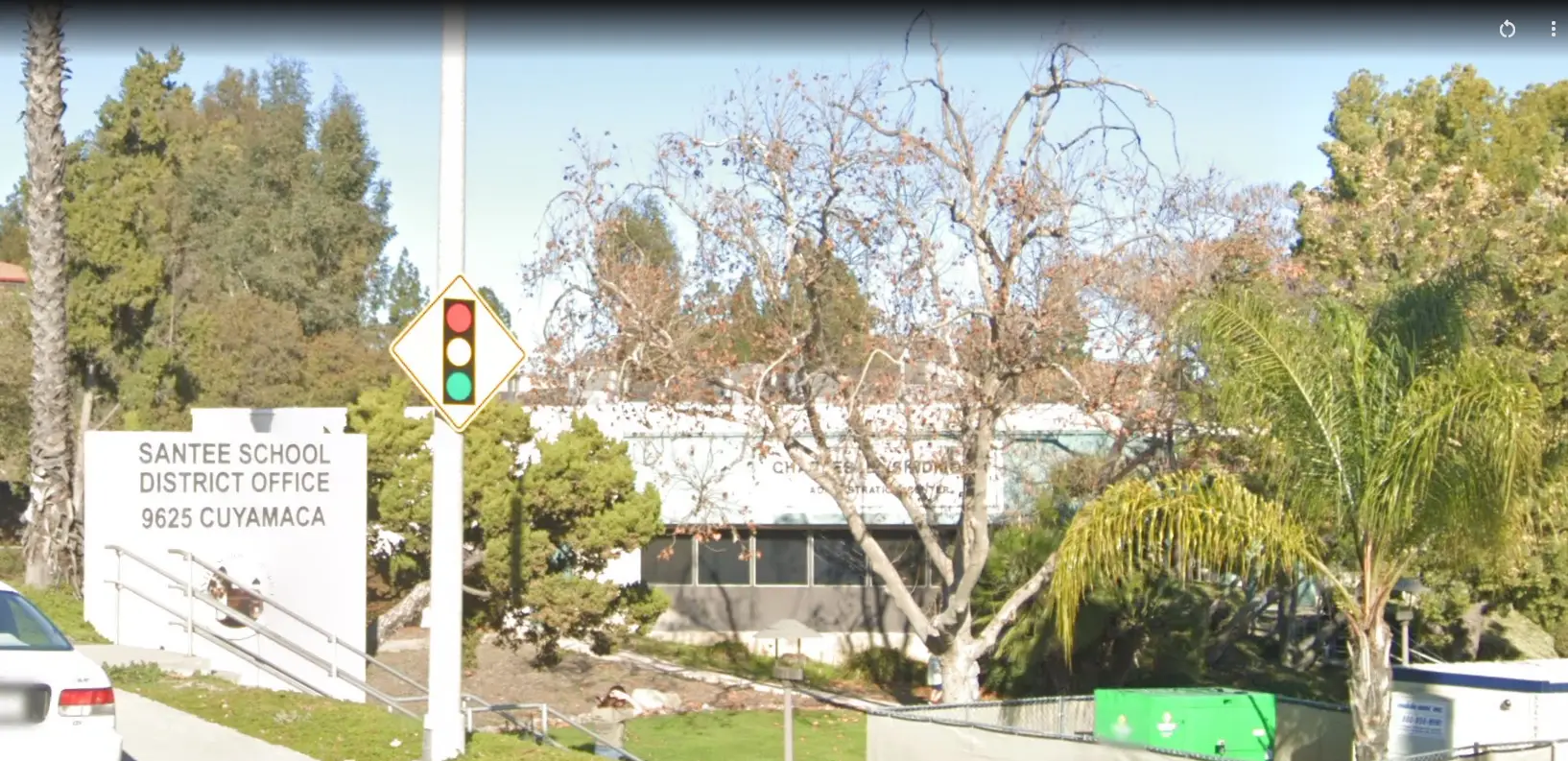SANTEE, Calf., —From the first day this landed in our inbox, the community told a single story about a staffing change at a local junior high: the same details, the same concerns, repeated by many voices, leading to protests outside Rio Seco and the District Offices. That unanimity set the early direction of our reporting. During the course of that work, a set of separate sources came forward with a different account—specific enough to pause publication, press the district for process answers, and re-examine what can be established on the public record without exposing anyone’s private file. This is the current status update in this investigation: an explanation of the laws that control what can and cannot be disclosed, a clear statement of what the record actually shows, and a sober acknowledgement of what the public is unlikely to see unless the people at the center of it choose to speak.
California gives school districts narrow, explicit authority to handle employee matters outside public view. The Brown Act permits boards to meet in closed session on “public employee appointment, employment, evaluation, discipline, dismissal, or release” (Gov. Code § 54957). That is where complaints, interviews, and findings—if any—are reviewed. When action results, the board “reports out” only to the extent the law requires; the underlying materials remain sealed. The California Public Records Act similarly protects personnel files from disclosure when release would invade privacy (Gov. Code § 6254(c)). Student information is independently protected by FERPA (20 U.S.C. § 1232g) and by state law (e.g., Ed. Code §§ 49060–49079). In short: the public may see that a change occurred; it will rarely see why.
Assignment mechanics live in a different set of rules. The power to assign and reassign employees sits with the district administration, typically delegated by statute to the superintendent “subject to board policy and applicable law” (Ed. Code § 35035), and then shaped by the collective bargaining agreement and adopted board policies/administrative regulations. In practice, human resources directs the process; the board is kept informed and records outcomes through the open-session personnel report (often a consent item); site leadership does not take final action on a certificated reassignment; and individual case details remain nonpublic. That separation—administrative lead, board record, private file—is by design.
Within that framework, here is what is publicly knowable in this matter. A reassignment occurred and was recorded in the ordinary way, on an open-session personnel report. The district answered process questions in general terms: HR directed the action; the board was informed; a board vote is not required for a reassignment; principal placements are administrative. In the same time frame, the board adopted an updated policy addressing conflicting personal relationships and the appearance of conflict, and the accompanying regulation authorizes HR to use remedial measures—including recusal or reassignment—when circumstances warrant. Those points are not rumor; they are visible in the public record and in the district’s own policy set.
What remains invisible is the part families understandably want most: the reason. Here the law’s boundary is hard. Complaints, interviews, investigatory notes, and performance-related materials live inside the personnel-records exemption (§ 6254(c)). Closed-session deliberations are permitted under the Brown Act (§ 54957) specifically to protect employee privacy and the integrity of the process. Unless the individuals directly involved place their accounts on the record—or a narrow category of otherwise disclosable documents emerges—the “why” will not be disclosed. That is not evasion; it is the legal architecture California has built around public employment.
This investigation also has to account for the competing narratives we received. The first wave of messages described one version of events and asked the district to explain itself. Later, sources presented another version that, if accurate, would change the way the community understands what happened. With both sets of claims now on our desk—and the underlying file legally sealed—there is no responsible way to declare which is true in print. As ever, there are three perspectives: one side’s account, the other side’s account, and the confidential record. Only the first two are freely speakable; But under the current agreement, neither party truly is free to speak upon this.
So what can reasonably be expected going forward? Even when privacy law shields the specifics, process transparency is still possible. Districts can publish plain-language explainers of who does what (HR, superintendent, board), keep a stable FAQ on what the public will and won’t see when personnel actions occur, and link prominently to the current policy and the current labor-agreement article that governs staff movement. None of that names names; all of it reduces speculation. Santee School District upholds and follows the transparency and privacy procedures. Further, one constructive change did appear during this period: the district clarified in policy that HR may deploy reassignment as a remedy when conflicts—or the appearance of conflicts—threaten the integrity of decisions. Whatever the catalyst, that tool now exists in writing.
This is as far as the reporting can go without breaching privacy or substituting rumor for proof. The record establishes that a reassignment occurred, where authority for such actions sits, and what rules now govern similar decisions. The details that would resolve the competing stories remain, by law, out of public view unless the people at the center of them choose otherwise. If new, verifiable information becomes available—on-the-record statements or records that the law actually permits—this outlet will revisit the matter. Absent that, this investigative update gives the community the most complete answer the law allows: the outcome is recorded; the process is defined; the guardrails have been tightened; and the private “why” will likely stay where the statutes keep it—inside the file.
If you have firsthand information that bears directly on what happened and how decisions were made, please use the contact form below to share what you know. Confidential submissions are welcome, and requests for anonymity will be honored.




